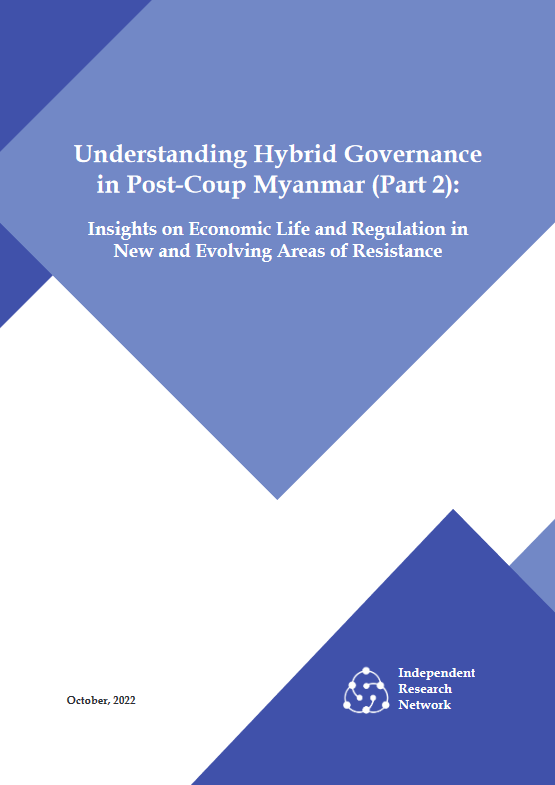Report
113 Views
Understanding Hybrid Governance in Post-Coup Myanmar (Part 2)
October 10th, 2022 •
Author:
Independent Research Network
•
3 minute read



Executive Summary
- The shift to hybrid governance in Myanmar has co-occurred with a major alteration in the livelihoods of millions of people especially in rural areas of the country. This is especially true in Sagaing and Chin State, but also in Rakhine State where SAC attempts to reassert itself in 2022.
- Since mid-2021 SAC security personnel have begun to run armed checkpoints where all goods are taxed on major roads in and out of towns it controls. SAC forces have also intensified burning and shelling of villages, houses, markets and other civilian structures with the aim of undermining popular support for resistance forces.
- In response to dire food and human insecurity, structural shifts have occurred towards a subsistence-based barter economy rather than market-based cash-cropping. Seasonal labour practices have also changed; landless and land-poor households are now less mobile within their home townships due to village-level suspicion of outsiders. This has driven some to seek riskier work further afield, including in artisanal jade mines in Kachin State.
- Village and neighbourhood welfare teams have expanded from their pre-coup roles in ambulance and funeral services, as well as other social functions to help pool resources and address food and water insecurity, support schools and deliver aid to displaced people.
- Practices of local reciprocity, especially via welfare teams at a village level, are crucial to sustaining insurgent social systems amid the struggle against SAC personnel. Village groups are regularly coordinating across townships with the support of resistance forces, including by identifying crops appropriate to the local landscape and trading seeds – sometimes across different states/regions – to help plan for food security.
- External support to local social actors is limited, with most relying on remittances from the diaspora in cities or abroad in addition to locally-pooled resources.
- Forms of revenue collection by parallel governance actors vary across contexts but largely focus on high-value assets and businesses. This includes levies on or confiscation of logged timber, licensing of fisheries and brewing, and fines for infringements. However, with the exception of a (voluntary) ULA Patriotic Fund in Rakhine State, no resistance forces encountered are seeking to tax ordinary households directly.
- Revenue sharing models have emerged in some contexts, with local resistance forces levying taxes or fines and splitting revenue with the NUG and local social systems. In some urban areas of Rakhine State ULA administrators have struck a deal with SAC municipal officers to split revenue raised from municipal taxes between the two entities.
- Taxing agents are largely balancing the need to raise revenue with the reality of communities being increasingly resource poor. Attempts by the NUG to raise revenue to fund more centralised mechanisms of governance must be sensitive to the reality of locally-financed insurgent social order.
- Domestic and international engagement with local social actors must be expanded both in the form of resourcing and training, potentially delivered via existing partnerships with ethnic social service providers (see Brief One).
- The logics and practices entrenched in areas examined since the coup highlights the deepening of sub-nationally varying approaches to governance and administration, which are unlikely to fade in any imagined future. These raise implications for the nature of federalism that are likely to be viable in a post-junta future, especially the degree to which models of governance can integrate the organic patterns of local social order that have emerged post-coup.

